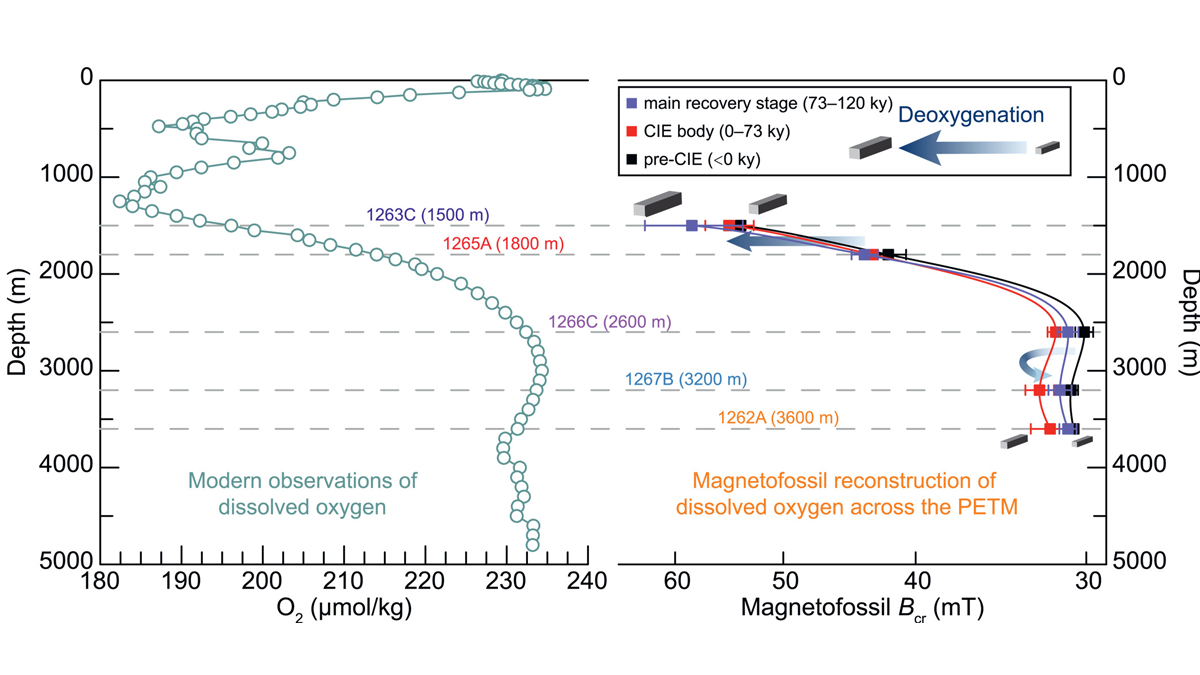Editors’ Highlights are summaries of recent papers by AGU’s journal editors.
Source: Journal of Geophysical Research: Solid Earth
The Paleocene-Eocene Thermal Maximum (PETM), a thermal pulse of 5 to 8°C in Earth’s surface temperature that occurred within 20,000 years, about 56 million years ago, is considered a good past analog of current anthropogenic global warming. Its consequences include ocean acidification and deoxygenation. The PETM stages are based on a prominent negative carbon isotope excursion (CIE) and include CIE onset (lasting ~20,000 years), CIE body (lasting ~70,000 years), and CIE recovery (lasting ~50,000 years). Widespread lower dissolved oxygen concentrations in the oceans typified the PETM. In carbonate-free sediments (PETM sediments feature pervasive carbonate dissolution), however, the paleoredox state is difficult to assess because few suitable proxy parameters exist.
Xue et al. [2022] use the morphology and magnetic properties of magnetosomes (tiny magnetite (Fe3O4) crystals in magnetotactic bacteria) to reconstruct the oxygenation state of the Atlantic Ocean along the Walvis Ridge transect drilled by the Ocean Drilling Program. The deoxygenated seawater evolved downwards during the early warming stages of the PETM with deep paleodepth sites being less deoxygenated than shallow sites. The authors put their results in an overall proxy parameter perspective and demonstrate that the magnetofossil proxy parameter yields profiles broadly consistent with available geochemical and modeling data.
Citation: Xue, P., Chang, L., Dickens, G. R., & Thomas, E. (2022). A depth-transect of ocean deoxygenation during the Paleocene-Eocene Thermal Maximum: Magnetofossils in sediment cores from the Southeast Atlantic. Journal of Geophysical Research: Solid Earth, 127, e2022JB024714. https://doi.org/10.1029/2022JB024714
—Mark J. Dekkers, Editor, Journal of Geophysical Research: Solid Earth

